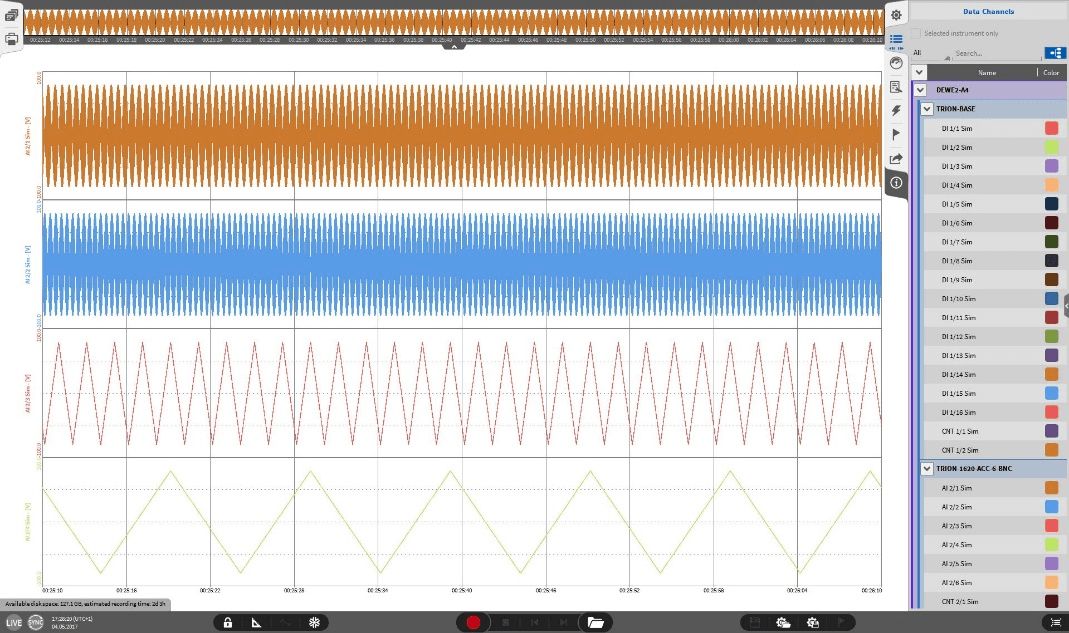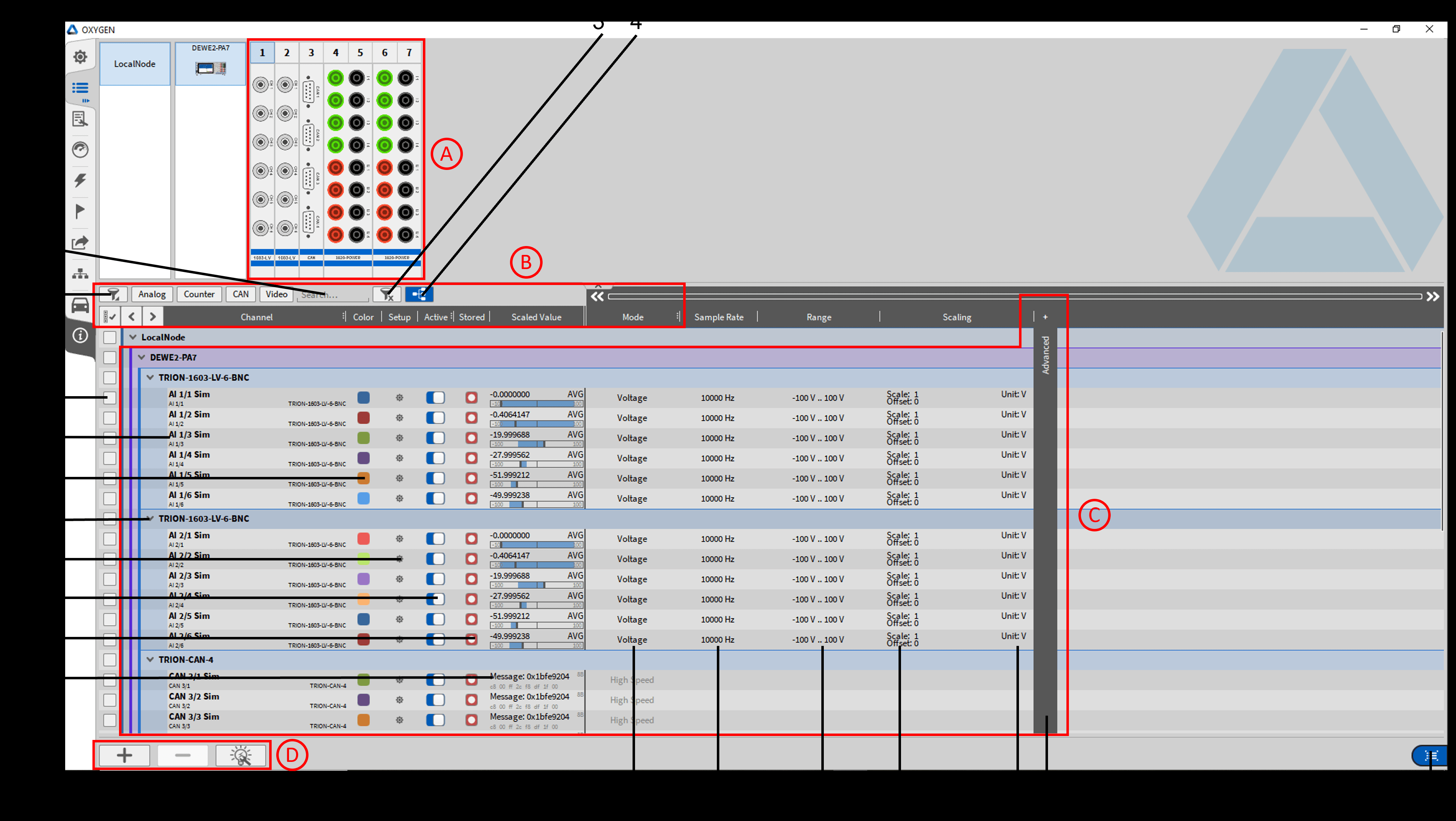In the DEWETRON data channel menu, the user can manage the signal input channel and set the hardware.

Left click the DEWETRON data channel menu to see the data channel list, which contains the enabled channels. Press and hold the left button to pull the menu to the other side of the screen to expand to the full screen, and the complete data channel menu can be opened, as shown in the figure. All channels and their associated hardware are displayed here and can be set separately. The function of each button will be explained in the following section.

Buttons in DEWETRON channel menu - overview
A - Hardware overview
Quickly view the TRION board and available channels of the device. Click a channel or the whole TRION card, and the corresponding channel will be lit
B - Filtering and Grouping
1 Find Filter Find a channel by channel name
2-channel screening Channel displayed through channel type screening (all, analog, digital, counting, EPAD, math, video, power, CAN)
3 Clear Filter Clear the selected channel and search filter
4-channel grouping Arranges the channel list in alphabetical order according to the type of TRION board connected
C - Channel Options
5 Select key to select multiple channels in the list and enable or disable them together
6 Channel name Independent channel name, which can be set separately; Refer to User Interface for more information.
7 Color Modify the display color of the channel here
8 Hide key to hide the channel of the whole card
9 Set to enter the setting menu of input channel (all settings of channel can be edited here)
10 Enable key enables or closes the channel: after the channel is enabled, it can be displayed, mathematically calculated and recorded; Not allowed after closing
11 Store key to select whether the channel is stored during measurement
12 Converted value preview input signal
13 Mode Modify the mode of the input channel here
14 Sampling rate Modify the sampling rate here; To set the sampling rate of a single channel separately, please refer to the channel sampling rate selector
15 Range Modify the range of the input channel here
16 Scale factor Modify the scale factor of the channel here
17 Physical units The physical units of a channel can also be modified in the channel settings
18 Advanced options Advanced options of the channel: excitation, low-pass filter, coupling, input type, sampling bits, sensor bias, baud rate, counter filtering, signal inversion, terminal resistance, etc. 19 Switch keys to quickly switch to the channel menu; Switch between the channel list and the previously opened menu
D - Math Options
20 Add key Add a formula, statistics, filtering, FFT, should change, power group, Ethernet receive or send.
21 Delete key deletes the selected formula, statistics, filtering, FFT, power group, Ethernet receiving or sending.
22 Add power group Add power group according to the selected channel or add a blank power group





